Technology
How to make your VPN faster
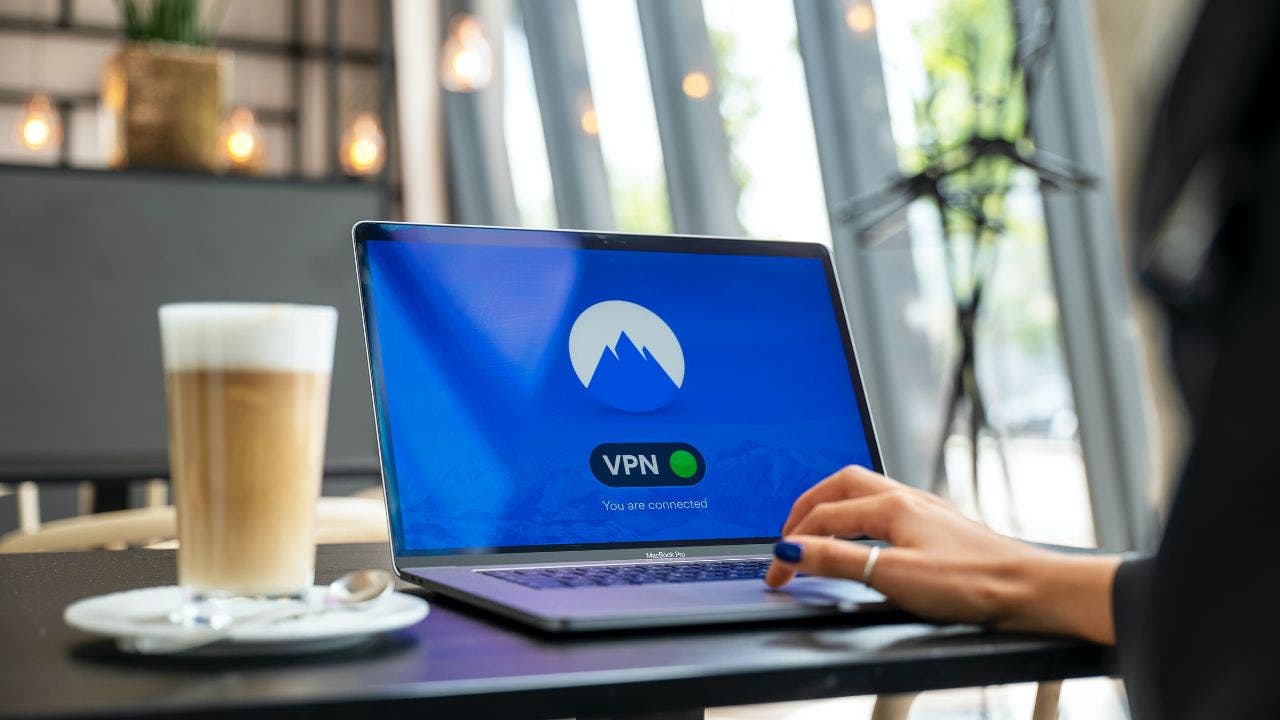
Many people turn to VPNs — virtual private networks — for added privacy and security online, only to find that their internet speeds suddenly slow to a crawl. But what exactly does a VPN do, and why might it cause this slowdown?
A VPN works by creating a secure, encrypted pathway between your device and the internet, keeping your data private from hackers, advertisers and anyone else trying to monitor your activity. This encryption process also allows you to browse as if you’re in a different location, which can help access content that may be restricted where you are.
I’M GIVING AWAY A $500 GIFT CARD FOR THE HOLIDAYS
Just ask Terry from Reno, who recently reached out with this frustration:
“My VPN slows down my phone to the point where I can’t open the apps! Help!”
You’re not alone, Terry. VPNs are fantastic tools for safeguarding data and unlocking restricted content, but that extra layer of protection and location masking can sometimes slow things down. The good news? There are several ways to keep your VPN running smoothly without sacrificing security. Let’s dive in.
A woman using a VPN on her laptop. (Kurt “CyberGuy” Knutsson)
Make sure it’s actually the VPN
Before we blame the VPN, let’s make sure it’s really the culprit. Here’s a quick test:
1. Disconnect from your VPN: Close your VPN application completely or turn off the VPN connection in your device settings.
2. Run a speed test at Speedtest.net and note the results: Click the “Go” button and wait for the test to complete. Write down your download and upload speeds, as well as the ping.
3. Connect to your VPN: Open your VPN application and connect to your preferred server. Wait until the connection is fully established.
4. Run the speed test again: Refresh the Speedtest.net page to ensure it detects your new location, then run the test again. Note down the new results.
If your VPN-connected speeds are less than about 60% of your normal speeds, then Houston, we have a VPN problem. If the difference is minimal, you may just need to optimize your base internet connection first.
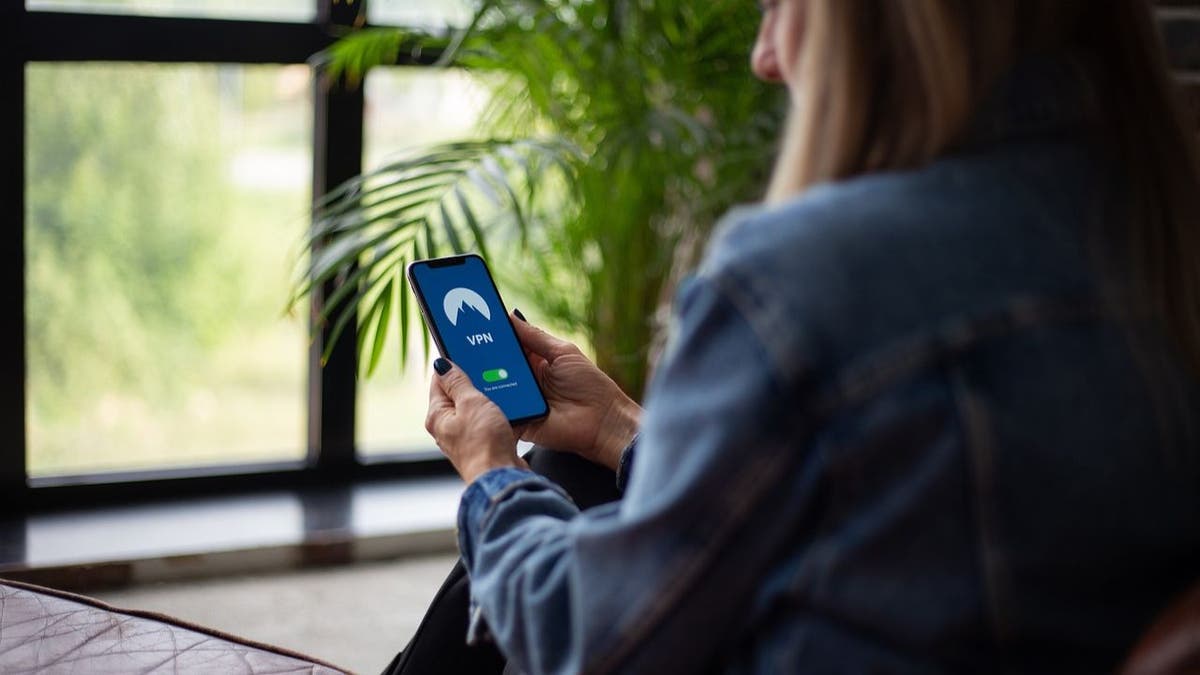
A woman using a VPN on her cellphone. (Kurt “CyberGuy” Knutsson)
TOP 6 HIDDEN WAYS A VPN CAN SAVE YOU MONEY NOW
Fixing VPN speed issues
When encountering slow speeds while using a VPN, it’s crucial to approach the problem systematically. Assuming the VPN is indeed the bottleneck in your connection, there are several steps you can employ to potentially boost your speeds and improve your overall experience.
1. Switch VPN servers
The physical distance between you and the VPN server location plays a significant role in connection speeds. Opting for a server closer to your geographical location can often result in a noticeable improvement. If you need to connect to a specific country for content access or other reasons, experiment with different cities within that country. Many VPN providers offer multiple server options in popular locations. Additionally, some VPNs display server load information, which can be incredibly useful. Connecting to a less crowded server typically yields faster speeds, as you’re sharing fewer resources with other users.
CLICK HERE FOR MORE U.S. NEWS
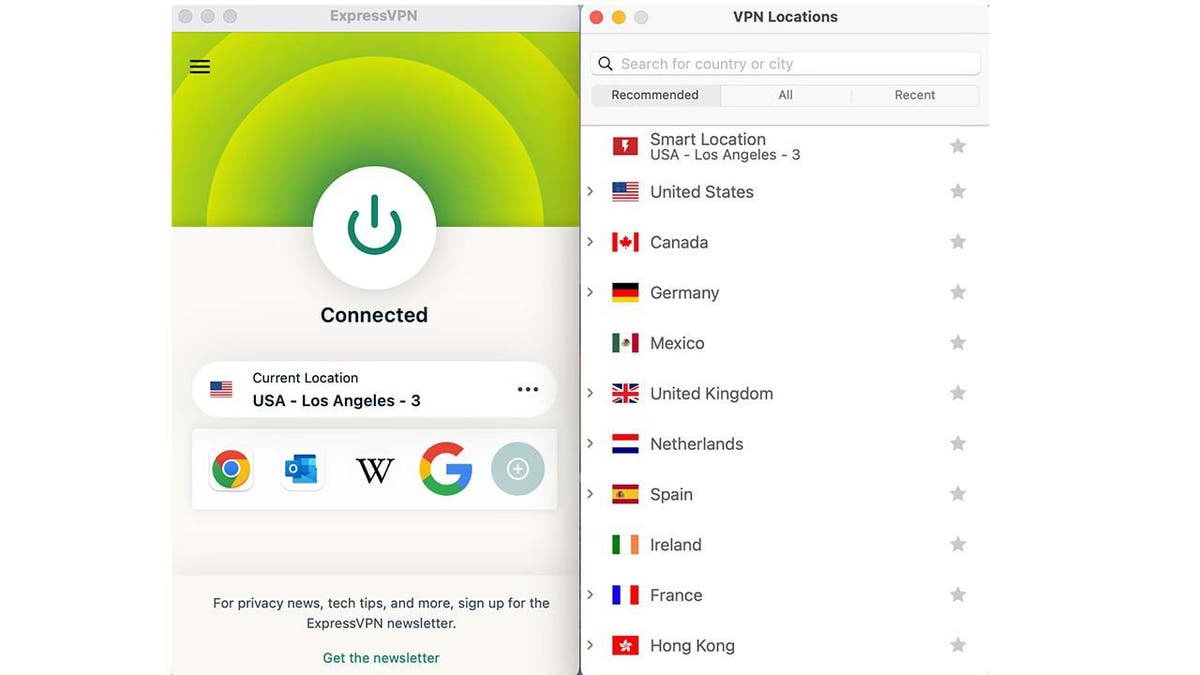
Various server locations available on VPN. (Kurt “CyberGuy” Knutsson)
2. Tweak VPN settings
Adjusting your VPN settings can lead to performance enhancements. If your VPN service allows for customization, consider lowering the encryption level from 256-bit to 128-bit AES. While 256-bit encryption is incredibly secure, it can sometimes impact speed. The 128-bit AES encryption is still considered very secure for most purposes and may offer a speed boost. Another setting to look for is the WireGuard protocol. If your VPN provider offers this newer protocol, enabling it could significantly improve your connection speed, as it’s designed to be both faster and more efficient than older protocols. For those using the OpenVPN protocol, switching from TCP to UDP can often result in faster speeds. However, approach these changes cautiously, especially if you’re not entirely sure about their implications. Avoid disabling critical security features in your quest for speed.
3. Change VPN protocols
Different protocols offer varying levels of speed and security. Generally, protocols like PPTP, L2TP and IKEv2 are known for their speed but may not provide the highest level of security. OpenVPN is often the default choice as it strikes a good balance between speed and security. If you decide to stick with OpenVPN, which is recommended for most users, try switching from TCP to UDP. This simple change can potentially provide a noticeable speed boost without compromising security.
4. Update your VPN app
Keeping your VPN application up to date is essential for ensuring optimal performance and security. VPN providers frequently release updates that not only enhance the overall functionality of their software but also address any bugs or vulnerabilities that may have been discovered. An outdated VPN app can lead to compatibility issues with your operating system, which can hinder performance and reduce connection speeds. Therefore, it is advisable to regularly check for updates within your VPN app’s settings or visit the provider’s official website to download the latest version. Additionally, many VPN services offer an automatic update feature, which you should enable to ensure that you are always using the most current version of the software without having to remember to do it manually.
5. Close background apps and optimize your device
To improve your VPN speed, it is important to minimize the load on your device by closing unnecessary applications running in the background. Many applications consume bandwidth and processing power, which can significantly affect your VPN’s performance. For instance, streaming services, file-sharing programs or even software that automatically updates can slow down your connection. Before connecting to your VPN, take a moment to close these apps and consider disabling any auto-sync features temporarily. Also, restarting your device before initiating a VPN connection is also a good practice, as it clears temporary files and frees up memory, allowing for a smoother experience.
6. Consider a faster VPN service
If you have tried various troubleshooting methods and your current VPN service still fails to deliver satisfactory speeds, it may be time to explore other options. The market is filled with numerous VPN providers that emphasize speed and reliability, so conducting thorough research is essential. Look for services that boast a large network of servers strategically located around the world, as this can significantly enhance connection speeds. Many top-tier VPN providers offer free trials or money-back guarantees, allowing you to test their performance without any financial risk. When evaluating potential new services, consider not only their speed but also their security features, privacy policies and customer support options. By making an informed choice, you can find a VPN that meets both your speed requirements and security needs effectively.
Remember, while these strategies can help optimize your VPN speed, it’s important to have realistic expectations. Your base internet speed, provided by your internet service provider (ISP), will always be the ultimate limiting factor. No VPN can make your connection faster than the maximum speed your ISP provides. However, by implementing these techniques, you can ensure that you’re getting the most out of your VPN connection and minimizing any unnecessary slowdowns.
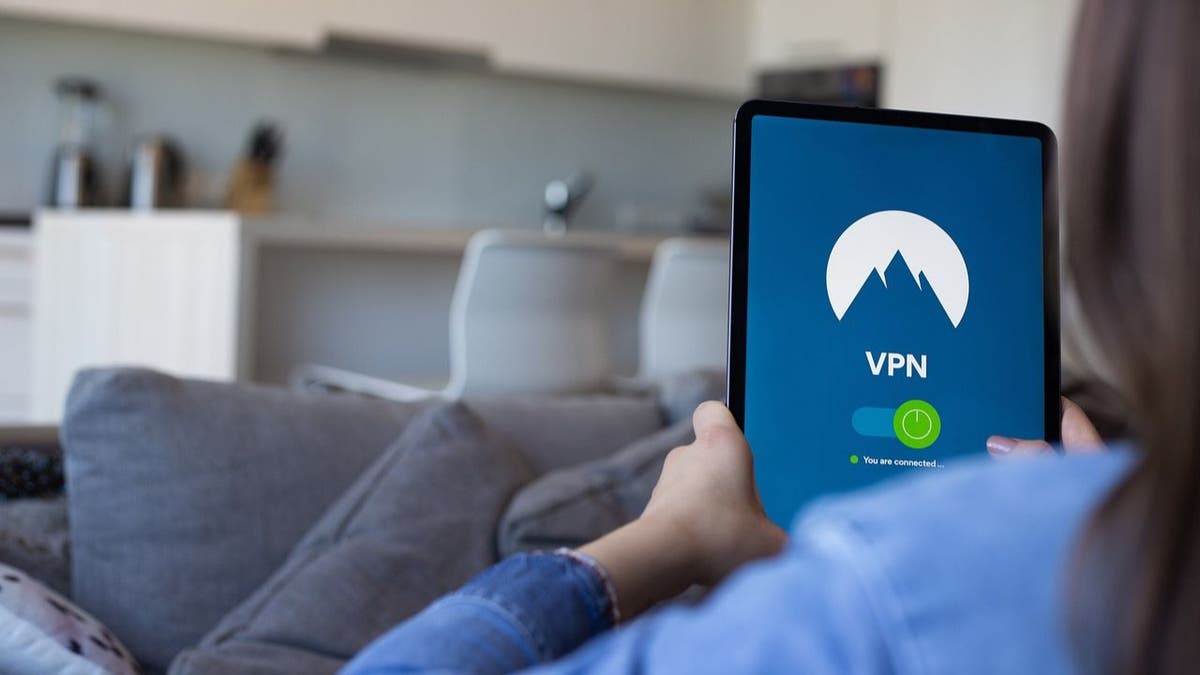
A woman using a VPN on her tablet. (Kurt “CyberGuy” Knutsson)
CAN I USE MULTIPLE VPNS ON MY DEVICES AT THE SAME TIME?
Find the perfect VPN
Regardless of whether you are new to VPNs or in need of a faster, more secure option, you’ll want to choose trusted VPN providers known for robust encryption and no-log policies to ensure your privacy. Whether for sensitive tasks or everyday use, reputable VPN services will boost both your security and speed. For best VPN software, see my expert review of the best VPNs for browsing the web privately on your Windows, Mac, Android & iOS devices
WHY YOU SHOULD BE USING A VPN TO SAFEGUARD YOUR STOCK TRADING ACTIVITIES
Kurt’s key takeaways
VPNs are incredible privacy tools, but they shouldn’t cripple your internet experience. With a bit of tweaking, you should be able to find a sweet spot between speed and security. And Terry, I hope these tips help get your phone apps running smoothly again. Remember, a good VPN might slow things down a tad, but it shouldn’t make your device unusable. If nothing here helps, definitely reach out to your VPN’s support team or consider trying a different service.
What challenges have you faced when trying to balance VPN security with connection speed, and how did you overcome them? Let us know by writing us at Cyberguy.com/Contact
For more of my tech tips and security alerts, subscribe to my free CyberGuy Report Newsletter by heading to Cyberguy.com/Newsletter
Ask Kurt a question or let us know what stories you’d like us to cover.
Follow Kurt on his social channels:
Answers to the most-asked CyberGuy questions:
New from Kurt:
Copyright 2024 CyberGuy.com. All rights reserved.

Technology
Google is shutting down Android Instant Apps over ‘low’ usage

Google has confirmed that it plans to shut down Android’s Instant Apps later this year, attributing the decision to “low” usage of the functionality.
Instant Apps were introduced in 2017, and allow developers to create mini versions of Android apps that load, well, instantly. Users can try apps and demo games from the click of a link, without having to fully install them. That makes the experience easier for users to navigate and provides developers with more ways to find new audiences.
Android Authority first reported that Google is moving on from the feature, which came to light after developer Leon Omelan spotted a warning about the change in Android Studio:
“Instant Apps support will be removed by Google Play in December 2025. Publishing and all Google Play Instant APIs will no longer work. Tooling support will be removed in Android Studio Otter Feature Drop.”
Google spokesperson Nia Carter confirmed the decision to The Verge, explaining that Instant Apps simply haven’t been popular enough to continue supporting.
“Usage and engagement of Instant Apps have been low, and developers are leveraging other tools for app discovery such as AI-powered app highlights and simultaneous app installs,” Carter says. “This change allows us to invest more in the tools that are working well for developers, and help direct users to full app downloads to foster deeper engagement.”
Technology
11 easy ways to protect your online privacy in 2025

NEWYou can now listen to Fox News articles!
Privacy is getting harder to protect in a world where everything is connected.
Whether you’re chatting with an AI, checking your email or using your smartphone, your personal information is constantly being collected, tracked and sometimes even sold.
But protecting your privacy in 2025 doesn’t have to be overwhelming. With a few practical steps, you can take back control of your data and make your online life safer. This guide walks you through 11 easy ways to get started.
Sign up for my FREE CyberGuy Report
Get my best tech tips, urgent security alerts and exclusive deals delivered straight to your inbox. Plus, you’ll get instant access to my Ultimate Scam Survival Guide free when you join.
Scrabble pieces form the word “SCAM.” (Kurt “CyberGuy” Knutsson)
1. Don’t overshare: Even with AI tools like ChatGPT
AI chatbots like ChatGPT are useful, but they’re not private journals. The platform owners may have privacy policies and use the latest security measures, but that doesn’t mean you should let your guard down. When using these tools, refrain from sharing any personal information, such as your name, address, birthdate, passwords, financial details or sensitive conversations. Remember that AI systems store and process your inputs, and despite security promises, data breaches can occur.
SCAMMERS CAN EXPLOIT YOUR DATA FROM JUST 1 CHATGPT SEARCH
Tip: Treat all online forms of AI interaction like public forums. Keep your examples generic and use caution with anything that could identify you.
If you’re going to input your personal information while using these AI tools, ensure there is an option to prevent them from sharing it. On ChatGPT, for instance, do the following:
- Go to Settings.
- Click Data controls.
- Tap Improve the model for everyone.
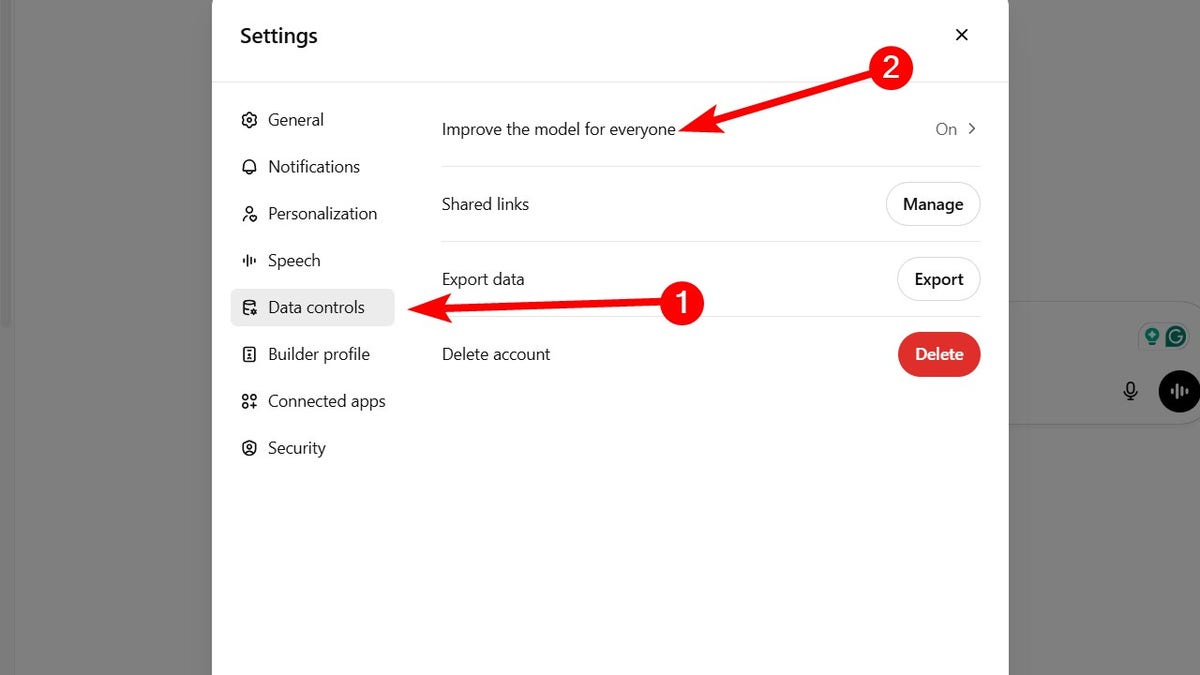
Steps to prevent ChatGPT from sharing your personal information (Kurt “CyberGuy” Knutsson)
- Toggle off Improve the model for everyone.
- Click Done.
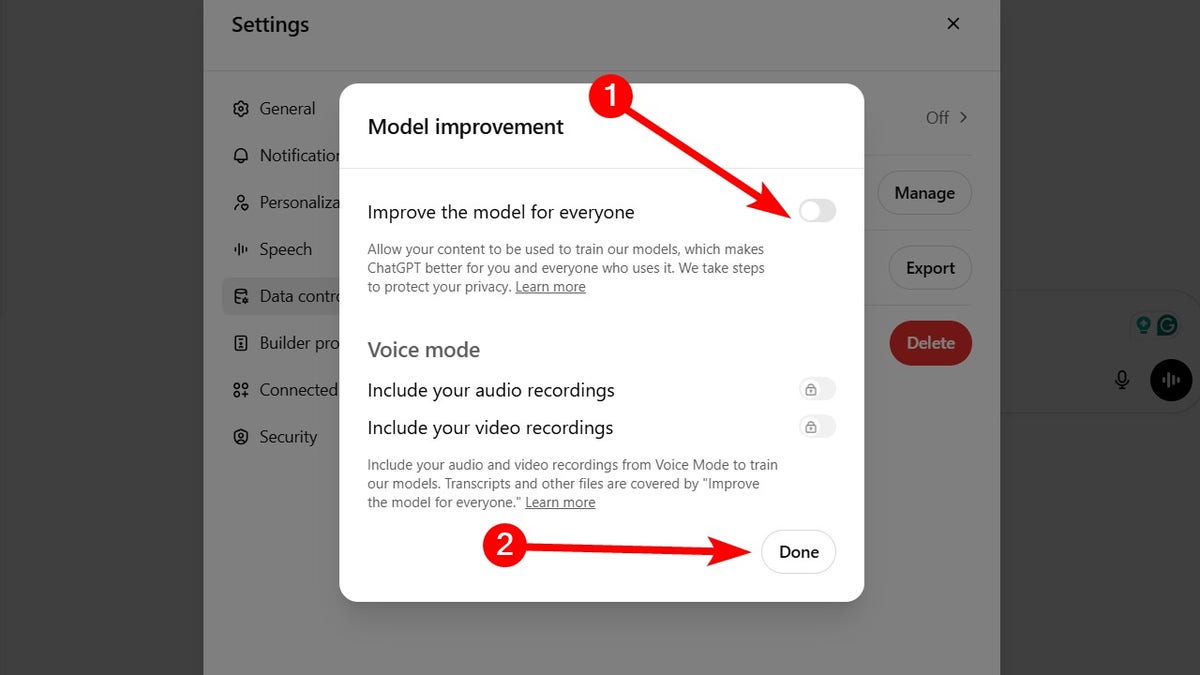
Steps to prevent ChatGPT from sharing your personal information (Kurt “CyberGuy” Knutsson)
Why it matters: AI tools may seem personal, but they’re not secure vaults. Guarding what you share helps prevent misuse, identity theft or data leaks from breaches.
CLEAN UP YOUR PHONE: SPEED, STORAGE AND PRIVACY BOOST IN MINUTES
2. Use alias email addresses
Your email is often the key to your online identity and a common target for spam. By creating disposable email aliases that forward messages to your main inbox, you can keep your real address hidden from websites and services. These unique aliases act as shields, so if one starts getting spammed or is involved in a data breach, you can simply deactivate it without affecting your main email account.
My top recommendation to avoid being inundated with spam emails is to use an alias email address. An alias email address is an additional email address that can be used to receive emails in the same mailbox as the primary email address. It acts as a forwarding address, directing emails to the primary email address.
In addition to creating throwaway email accounts for online sign-ups and other circumstances where you would not want to disclose your primary email address, alias email addresses are helpful for handling and organizing incoming communications.
Sometimes, it’s best to create various email aliases so that you don’t have to worry about getting tons of spam mail or having your information taken in a data breach. An alias email address is a great way for you to stop receiving constant spam mail by simply deleting the email alias address. See my review of the best secure and private email services here.
Why it matters: You stay anonymous, avoid data leaks and never have to change your main email address again.
BEST ANTIVIRUS FOR MAC, PC, IPHONES AND ANDROIDS – CYBERGUY PICKS
3. Take advantage of Facebook’s privacy checkup
Meta frequently updates its privacy settings, so it’s best to check regularly to see how you can improve your privacy. Use Facebook’s Privacy Checkup tool to review and adjust crucial settings, including post visibility, app permissions, search visibility and friend-request settings. This comprehensive tool helps ensure your profile remains as private as you want it to be. You can find the tool by following these steps:
- Log in to your Facebook app on your phone.
- Then click the menu icon in the bottom right.
- Tap Settings.
- Click Privacy Checkup.
Once you open the Privacy Checkup, you’ll be guided through several key areas to customize your privacy preferences and better control your information.
- Who can see what you share: Adjust who can view your posts, photos and profile details to limit access to only people you trust.
- How people can find you on Facebook: Manage who can send you friend requests, look you up using your email or phone number, and decide whether your profile appears in search engines.
- Your data settings on Facebook: Review which apps and websites have access to your Facebook data and remove any you no longer use or trust.
- How to keep your account secure: Set up two-factor authentication, update your password and monitor login alerts to protect your account from unauthorized access.
- Your ad preferences on Facebook: Control how Facebook uses your activity to show you personalized ads and opt out of categories that feel too intrusive.
Quick tip: Set a reminder to run a privacy checkup every few months, especially after major Facebook updates. This way, you’ll always be in control of your information.
Why it matters: Social media platforms thrive on your personal data. Adjusting your settings regularly puts you back in control of what others and Facebook can see and use.
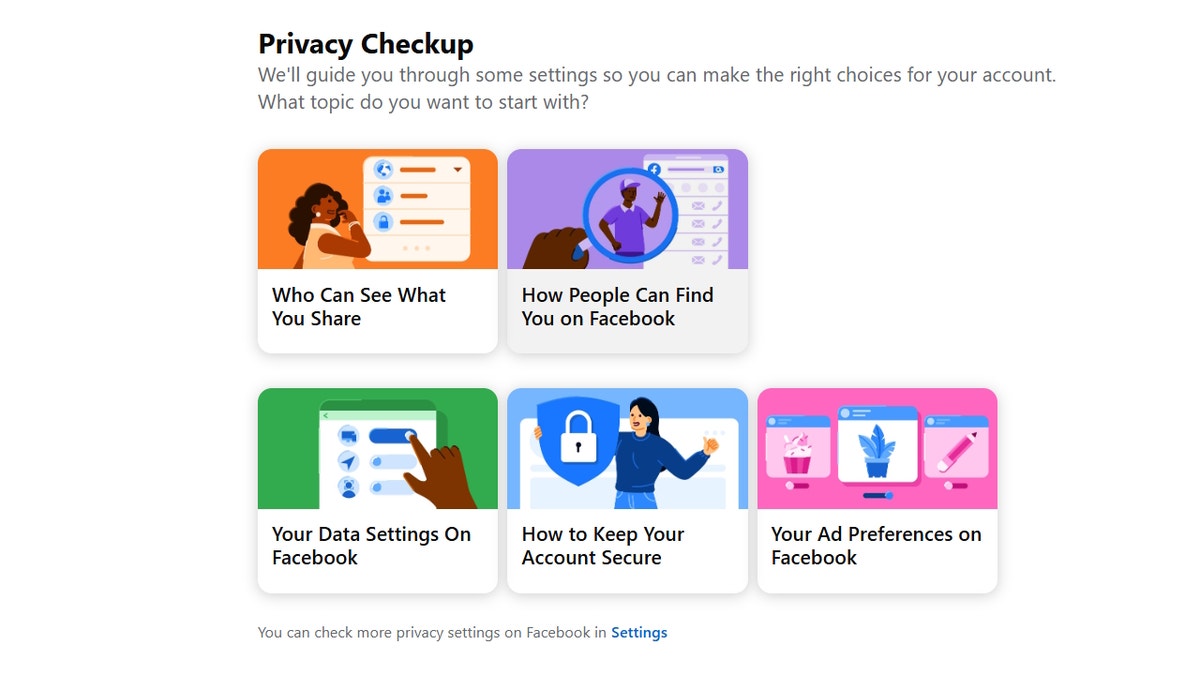
Facebook’s privacy checkup (Kurt “CyberGuy” Knutsson)
HOW TO PROTECT YOUR ONLINE PRIVACY AND SECURITY ON YOUR NEXT CRUISE VACATION
4. Scrub yourself off the internet automatically
Your name, phone number and home address may already be listed on people-search sites like Spokeo, Whitepages and BeenVerified. These data brokers collect and sell your personal information without you even knowing it. Fortunately, personal data removal services are available to protect your privacy. They automatically send legal removal requests to hundreds of data brokers. They also go above and beyond by continuously monitoring them in case these third parties happen to get your information again.
While no service can guarantee the complete removal of your data from the internet, a data removal service is really a smart choice. They aren’t cheap and neither is your privacy. These services do all the work for you by actively monitoring and systematically erasing your personal information from hundreds of websites. It’s what gives me peace of mind and has proven to be the most effective way to erase your personal data from the internet. By limiting the information available, you reduce the risk of scammers cross-referencing data from breaches with information they might find on the dark web, making it harder for them to target you. Check out my top picks for data removal services here.
Get a free scan to find out if your personal information is already out on the web.
Why it matters: The less personal information available about you online, the harder it is for scammers and identity thieves to target you and the more peace of mind you’ll have.
10 SIMPLE STEPS TO IMPROVE YOUR SMARTPHONE’S SECURITY AND PRIVACY
5. Use a privacy-focused messaging app
If you’re still using standard texting apps or platforms like Facebook Messenger, it’s time to upgrade to a more secure option. Apps like Signal and Session offer end-to-end encryption, no ads and no metadata tracking, meaning they can’t see who you’re talking to or what you’re saying. Both apps support disappearing messages, giving you more control over how long your conversations stick around.
Why it matters: Your messages stay private and can’t be accessed by hackers, advertisers or the app developers themselves.
6. Stop Google from tracking your every move
Google collects a massive amount of data from your searches, YouTube views, Gmail activity and location history, all of which fuels targeted advertising. You can stop much of this tracking by turning off Ad Personalization and deleting your activity history. Here’s what to do:
- Go to Google’s My Ad Center.
- Find the Ad Personalization section.
- Toggle the switch to turn off ad personalization. This stops Google from using your activity to tailor ads.
Manage activity history
- In My Ad Center or via your Google Account, go to Data & Privacy.
- Under History Settings, review and pause or delete: Web & App Activity, YouTube History and Location History (if applicable).
Delete existing activity data
- Select Manage all Web & App Activity, Manage all YouTube History, etc.
- Delete past activity by choosing a time range (e.g., “All time”) and confirming deletion for each category.
Opt out of third-party ad personalization
- Scroll to Ad settings and look for third-party ad personalization options.
- Opt out of partner sites’ ad personalization if available.
- If you have multiple Google accounts, repeat these steps for each account.
Why it matters: Cutting down on ad tracking reduces how much of your online behavior is used to build a profile on you, often without your knowledge.
7. Turn off location tracking on your smartphone
Apps don’t need to know your every move. Disabling or limiting location tracking is one of the simplest ways to protect your physical privacy. Here’s what to do:
iPhone:
- Go to Settings.
- Tap Privacy & Security.
- Click Location Services.
- Scroll down and tap the app you want to manage.
- Choose your preferred setting: Never to block location access completely; Ask Next Time Or When I Share to allow location only with your permission; While Using the App to allow location only when the app is open.
For apps like Maps, toggle Precise Location off to prevent pinpoint tracking.
To disable location tracking entirely, toggle Location Services off at the top of the Location Services page (this will stop all apps from using your location).
Android:
Settings may vary depending on your Android phone’s manufacturer.
- Go to Settings.
- Tap Location.
- Tap App permissions or App location permissions.
- You will see a list of apps grouped by their location access: Allowed all the time; Allowed only while in use; Ask every time; Not allowed.
- Tap any app to change its location permission. Choose from: Allow all the time; Allow only while using the app; Ask every time; Don’t allow.
For apps that have location access, you can also turn Precise location on or off if you want to limit accuracy. Repeat for each app you want to manage.
Tip: If you want to stop all apps from accessing your location, you can turn off Location at the top of the Location settings page.
Why it matters: Prevents apps, advertisers and even your OS from building a detailed map of your daily routines.
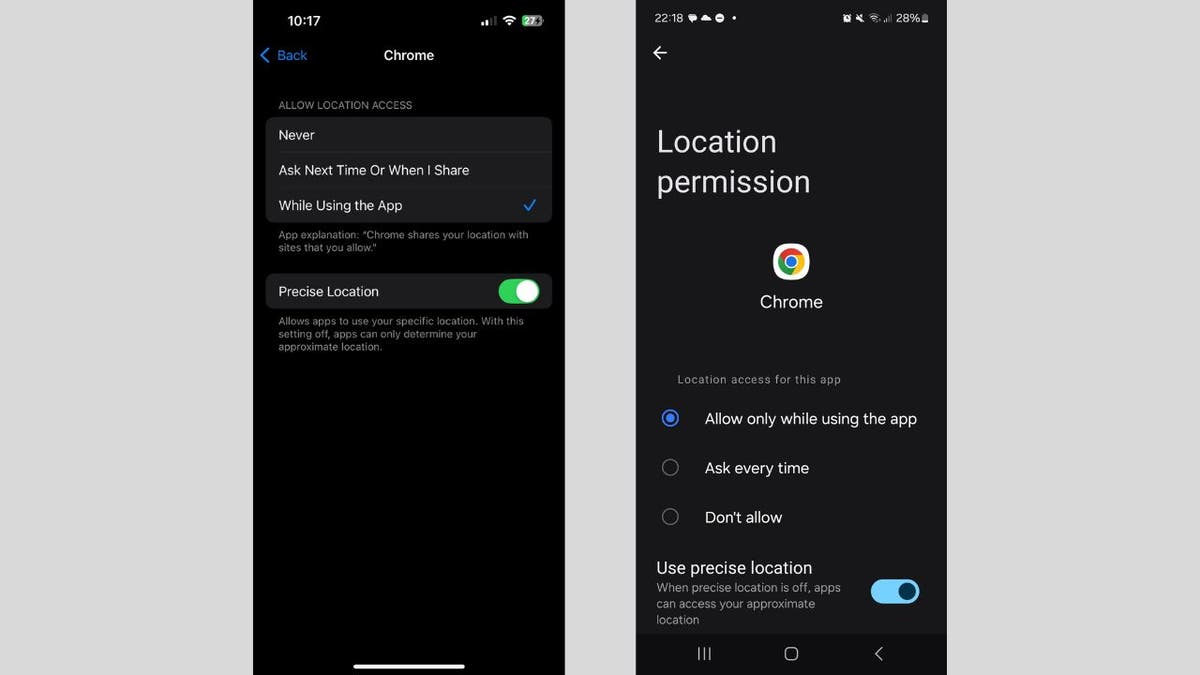
Steps to turn off location tracking on your smartphone (Kurt “CyberGuy” Knutsson)
WHAT IS ARTIFICIAL INTELLIGENCE (AI)?
8. Change the default admin password on your router
Most routers ship with default admin usernames and passwords like “admin” or “1234,” and these are publicly available online. Hackers know this and often scan networks looking for unprotected routers. Here’s what to do:
- Log in to your router’s settings via its IP address (often 192.168.1.1 or 192.168.0.1).
- Change the admin username and password to something strong and unique.
- Consider using a password manager to generate and store complex passwords. Get more details about my best expert-reviewed password managers of 2025 here.
Why it matters: Prevents intruders from hijacking your home network and spying on your devices.
9. Enable WPA3 encryption on your Wi-Fi router
WPA3 is the newest wireless encryption protocol and offers much stronger protection than WPA2. If your router supports WPA3, enabling it is a no-brainer. How to check:
- Log into your router settings and look under Wireless Security.
- If WPA3 is available, enable it.
- If not, consider upgrading to a newer, security-focused router. Check out our top routers for best security 2025.
Why it matters: Stronger encryption means hackers can’t easily intercept or crack your Wi-Fi traffic.
10. Set up a guest network for visitors and smart devices
Your friends don’t need access to your entire home network and neither do your smart lights and doorbells. Creating a guest network adds a safety barrier between your personal devices and less trustworthy ones. Steps to take:
- Log into your router settings.
- Create a separate guest network with its own password.
- Connect smart devices, TVs and guests to this network only.
- Keep your main network just for personal computers and phones.
Why it matters: Even if a smart device gets compromised, the attacker won’t have access to your main network or sensitive devices.
11. Use a secure, private browser for sensitive browsing
Not all browsers treat your privacy equally. Switching to a browser designed for privacy like Brave, Firefox or DuckDuckGo’s browser can drastically cut down on the amount of data collected about you while you browse. Also, use incognito/private mode for sensitive searches.
Why it matters: Reduces digital fingerprints and helps stop advertisers and data brokers from building a profile on you based on your browsing behavior.
SUBSCRIBE TO KURT’S YOUTUBE CHANNEL FOR QUICK VIDEO TIPS ON HOW TO WORK ALL OF YOUR TECH DEVICES
Kurt’s key takeaways
Staying private online isn’t about being paranoid; it’s about making smart, intentional choices. With the right tools and a few small changes, you can take back control of your data in 2025. Digital privacy is always changing, so it’s a good idea to check your settings and habits every so often. The upside is that for every new privacy challenge, there’s usually a way to push back and keep your information safe.
If you’d like a printable checklist or want this content turned into a shareable infographic, just let me know.
What privacy tools and methods do you use to protect your data online? Let us know by writing us at Cyberguy.com/Contact.
For more of my tech tips and security alerts, subscribe to my free CyberGuy Report Newsletter by heading to Cyberguy.com/Newsletter.
Ask Kurt a question or let us know what stories you’d like us to cover.
Follow Kurt on his social channels:
Answers to the most-asked CyberGuy questions:
New from Kurt:
Copyright 2025 CyberGuy.com. All rights reserved.
Technology
Anker is recalling over 1.1 million power banks due to fire and burn risks

The recall covers about 1,158,000 units that were sold online through Amazon, Newegg, and eBay between June 2016 and December 2022. The affected batteries can be identified by the Anker logo engraved on the side with the model number A1263 printed on the bottom edge. However, Anker is only recalling units sold in the US with qualifying serial numbers. To check if yours is included, you’ll need to visit Anker’s website.
Anker is offering affected consumers their choice of either a $30 gift card (the recalled battery cost around $27) that can be used on Anker.com, or a free 10,000mAh Anker power bank as a replacement (model A1388) featuring upgrades including a charge level display and a USB-C charging cable lanyard.
To receive the gift card or the replacement, Anker requires a “photo of the power bank with the submission date and the word ‘recall’ or ‘recalled’ written clearly in permanent marker,” to be submitted, and a “photo showing the model number and serial number (SN) printed on the bottom of the device.” The company is also requesting a purchase receipt, but it’s not mandatory to participate in the recall.
After confirming that your power bank is one of the recalled units, Anker says it should be taken to a facility that can safely dispose of lithium-ion batteries due to the risk of fire. Those facilities can be found through the Environmental Protection Agency’s website or other organizations in the US that specialize in processing e-waste. Do not throw them in the trash, recycling bins, or used battery boxes provided at various retail locations.
The recall is also a reminder that power banks and backup batteries can potentially develop severe issues over time, as these particular units are almost a decade old. If you’ve been regularly using devices featuring lithium-ion batteries for a while, you’ll want to be mindful of issues like overheating or visible swelling and dispose of them properly if you think there’s a potential problem. And while the technology is currently more expensive than lithium-ion batteries, you can also consider upgrading to solid-state batteries which are more powerful, safer, and longer lasting than what we commonly use now to power our devices.
-

 West7 days ago
West7 days agoBattle over Space Command HQ location heats up as lawmakers press new Air Force secretary
-

 Technology1 week ago
Technology1 week agoiFixit says the Switch 2 is even harder to repair than the original
-

 World1 week ago
World1 week agoEU-Ukraine trade reset: What comes after tariff-free access expires?
-

 Technology1 week ago
Technology1 week agoThe single best wireless controller I’ve ever used
-

 Politics1 week ago
Politics1 week agoHawley clashes with UPenn law professor over judicial injunctions
-

 Business1 week ago
Business1 week agoHow Hard It Is to Make Trade Deals
-

 Movie Reviews1 week ago
Movie Reviews1 week agoPredator: Killer of Killers (2025) Movie Review | FlickDirect
-

 News1 week ago
News1 week agoTrump’s Higher Steel Tariffs Sour Mood at Deal-Making Table












